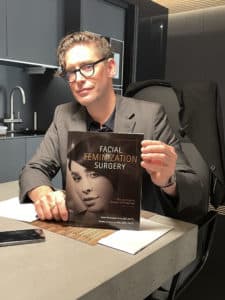What Is Distraction Osteogenesis?
Distraction Osteogenesis of the facial skeleton, also called callus distraction, callotasis and osteodistraction, is a surgical procedure used to reconstruct deformities and lengthen facial bones. The procedure is primarily used for the correction of micrognathia, midface, and fronto-orbital hypoplasia in patients with craniofacial deformities.
The word “distraction” means we cut the bones, but rather than moving them, we leave them in their original position with a small device in place that gradually lengthens the healing bone.

Just Published!
The wait is over! Dr. Deschamps-Braly’s new book “Facial Feminization Surgery: The Journey to Gender Affirmation” is back and available now. This second edition covers the advances in facial feminization as well as helpful patient stories and is a great resource for FFS patients and their loved ones.
LEARN MOREWhen Is Distraction Osteogenesis Used?
Distraction Osteogenesis is used for very specific reasons in certain patients. When very large movements are planned sometimes there can be problems with the soft tissues of the face counteracting the movement we’re trying to make.
Therefore, a gradual movement which gives the skin and muscles time to adjust and stretch slowly is preferable to one large single movement. This approach gives the body time to adapt to the change.
Also, sometimes very large movements have a risk for not healing properly and therefore a gradual movement is preferable in those scenarios.
The Distraction Osteogenesis technique is used in the following procedures:
- Pierre Robin Sequence
- Hypoplasia of the mandible in pediatric patients
- Crouzon’s syndrome
- Pfeiffer’s syndrome
- Tessier Facial clefts
- Severe Hypoplasia of the mid-face without associated syndromes
- Cancer reconstruction
- Reconstruction of bony defects of the facial skeleton
- Post traumatic reconstruction of the face



